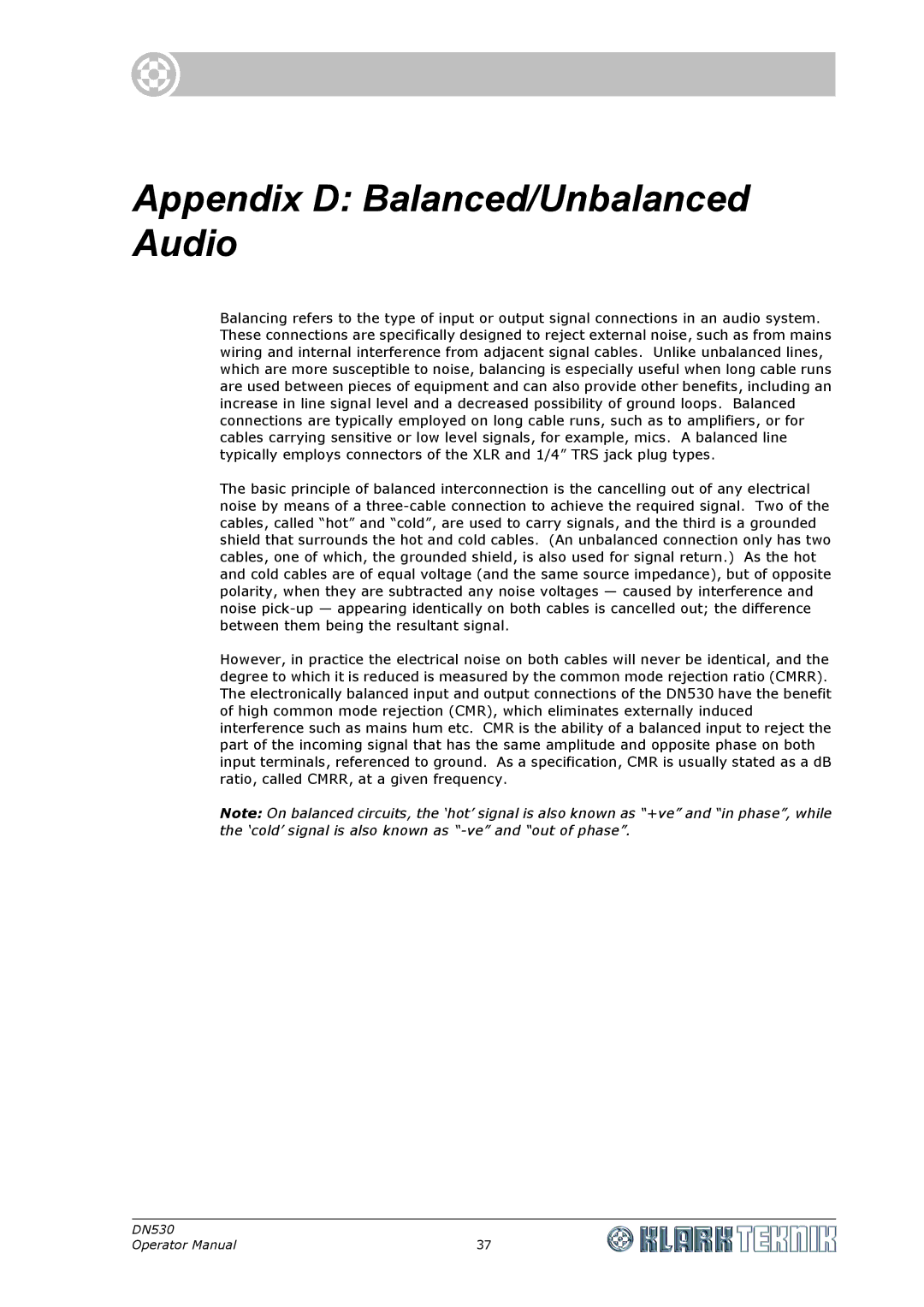DN530 specifications
The Klark Teknik DN530 is a versatile and powerful dynamic range compressor, designed to meet the demands of both music production and live sound engineering. Renowned for its high-quality audio processing capabilities, the DN530 offers a wide array of features that benefit professionals in various audio applications.One of the standout features of the DN530 is its dual-channel compressor design. This allows users to process two separate audio signals simultaneously, making it an ideal choice for stereo applications. The compressor utilizes advanced VCA technology, which ensures consistent dynamic control while maintaining the natural character of the audio. This technology provides a transparent sound, making it suitable for a variety of instruments, vocals, and other audio sources.
The DN530 offers comprehensive control over compression parameters, including threshold, ratio, attack, and release. The threshold determines the level at which compression begins, while the ratio defines the degree of compression applied to signals exceeding the threshold. Users can manipulate the attack and release settings to shape the compressor's response to the audio signal, allowing for greater flexibility in achieving the desired sound.
Another key characteristic of the DN530 is its sidechain feature. This allows users to introduce external audio signals to control the compression applied to the primary signal. This function is particularly useful for dynamic ducking effects, such as reducing the volume of background music when a vocal is present or achieving a pumping effect in dance music.
The DN530 also includes an innovative metering system, featuring LED indicators that provide clear visual feedback on signal levels, gain reduction, and other important parameters. This enhances the user experience, allowing sound engineers to make informed adjustments quickly and efficiently.
Built with rugged construction, the DN530 is designed to withstand the rigors of live performance environments. Its sturdy chassis and reliable components ensure longevity and durability, making it a trusted addition to any professional audio setup.
In summary, the Klark Teknik DN530 is a feature-rich dynamic range compressor that excels in both studio and live sound scenarios. With its dual-channel capability, advanced VCA technology, comprehensive control over compression parameters, sidechain functionality, and robust build quality, it stands out as a top choice for audio professionals seeking to enhance their sound processing capabilities.

